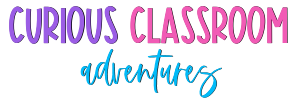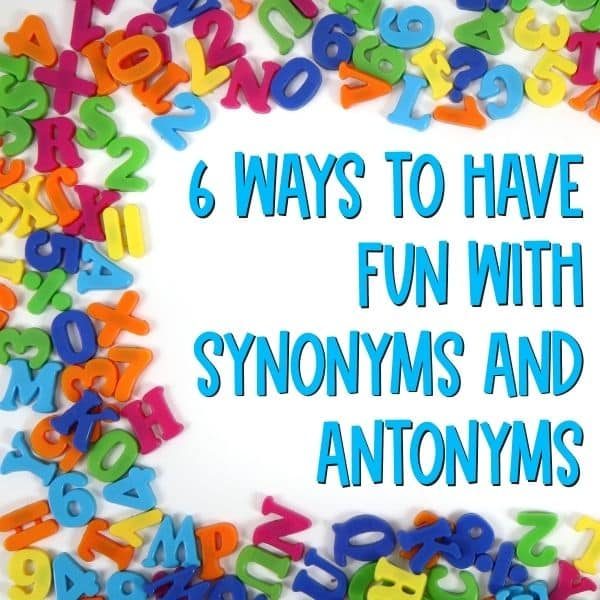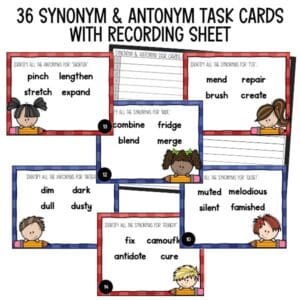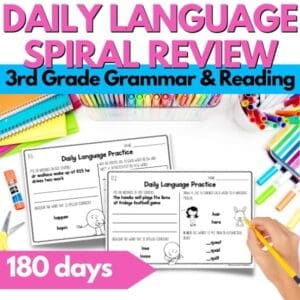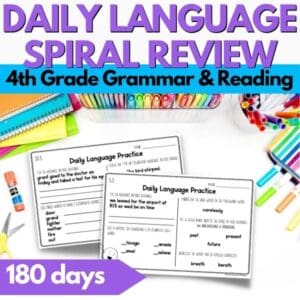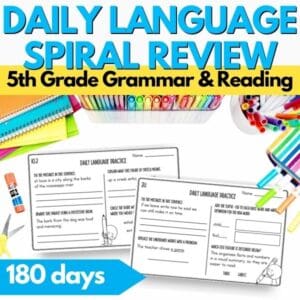Today’s post is all about synonyms and antonyms! We all want our kids to have a robust vocabulary…and let’s be honest, we just can’t read one more stack of essays filled with tired old adjectives like happy, sad, mad, awesome, and amazing. So, here are six fun ideas for teaching and practicing synonyms and antonyms with your 3rd through 5th graders.
1. Task Cards for Synonyms and Antonyms
Task cards are a staple for any classroom so you should definitely have a set focused on synonyms and antonyms that you can drop in an ELA vocabulary station. Buy or create sets of task cards where students must choose all the words that are synonyms or all the words that are antonyms. Use these task cards in small groups, centers, or as part of a scavenger hunt around the classroom. To add a little fun and variety choose one of set of synonyms and antonyms cards that designed with a holiday in mind! You can find one for an upcoming holiday using this link!
2. Outlaw Words in Writing Activities
Incorporate synonyms and antonyms into your writing lessons. Challenge students to write sentences or short paragraphs using a variety of synonyms and antonyms for overused words. For example, they could write a story about a “happy” day but the word “happy” is outlawed so they have to use synonyms like “joyful” and “elated,” and then rewrite it as an “unhappy” day where the words “sad” and “bad” are outlaws. This not only helps them practice the vocabulary but also gives their descriptive writing muscles a workout!

3. Word Webs
Word webs are a fantastic way to visually explore synonyms and antonyms. Start with a base word in the center of the web, such as “big.” Have students brainstorm and add synonyms around the word, like “large, huge, enormous.” Then, create another web for antonyms, like “small, tiny, little.” This activity helps students see the relationships between words and expand their vocabulary.
4. Synonyms and Antonyms Matching
Create a matching game where students have to pair synonyms or antonyms together. You can use index cards or printable sheets with words that need to be matched. For example, one card might have “fast” and students need to find its synonym “quick” or its antonym “slow.” This can be a timed activity or a collaborative game in pairs or small groups.
5. Daily Language Review
Consistency is key! Utilize a daily language review resource like this one that includes synonym and antonym practice regularly. This ensures that students are consistently exposed to these vocabulary skills. Over time, this daily practice will help reinforce their understanding and usage of these words. Whether you choose 3rd, 4th, or 5th grade, grade-level appropriate synonyms and antonyms will be a part of your weekly practice regimen.
For more ideas on using daily language reviews in your classroom, check out this blog post!
6. Synonyms and Antonyms Relay Race
Get your students moving with a synonym and antonym relay race. Divide the class into teams and have them line up. Place a stack of word pair cards at the front of each line. The first student in each line picks a card, read pair of words, runs to a designated spot, and either writes a synonym or antonym on the board before running back and tagging the next student. The first team to correctly complete their set wins!
Feel free to share your favorite activities for teaching synonyms and antonyms in the comments below. Let’s keep the learning fun and collaborative!
